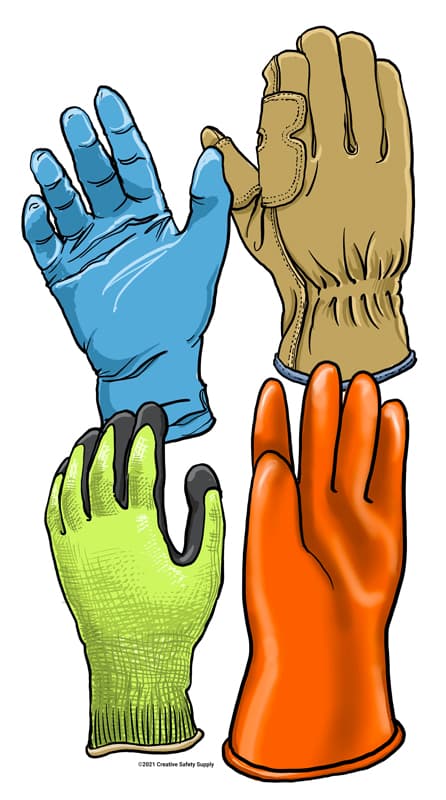
Unlike hard hats, hearing protection, and eyewear, safety gloves are one of the few items of PPE not regulated by OSHA standards. OSHA however, does specify that employers should evaluate the conditions and hazards at hand and appropriately select safety gloves relative to the task performed and the present risk.
Hands can be exposed to harmful substances through skin absorption, severe cuts or lacerations, abrasions, chemical burns, thermal burns, and harmful temperature extremes. Using dangerous machinery or working with hazardous tools also pose a risk to a worker’s hands. It will be important to note the risks that can affect hands in the workplace during the hazard risk assessment.

Industrial Safety Gloves
Some factors OSHA says should influence and employer’s choice of safety gloves include:
- The types of chemicals being handled.
- Nature of content – total immersion of the hand, splashes, etc.
- Thermal protection
- Grip requirements
- Glove material – leather, canvas, metal mesh, etc.
- Temperature the gloves will be used in
In some workplaces, like healthcare facilities, disposable gloves will do the trick, while in professions like welding, a worker will need a pair heavy duty, fire resistant gloves. It is important for a facility manager to understand the hazards in the workplace and the correct level of protection needed.
There are touchscreen gloves allowing workers to operate a touchscreen while still protecting their hand, gloves with a strong grip to them, insulated gloves that protect against electrocution, gloves that will protect hands from impact, and even gloves designed to effectively work with power tools. It is important for facility or safety managers should purchase gloves that fit comfortably.
Finally, visual communication can be extremely important for hand safety. PPE safety labels and signs should be placed on or around machines that require the worker to don safety gloves. This could be for food prep areas, dangerous machineries, or hazardous equipment.
Similar Questions
- What PPE is recommended for chemical hazards?
- What is hearing protection?
- What are different types of PPE?
- What PPE is commonly used in construction sites?
- What situations require PPE?
- What PPE can protect a worker from electrocution?
- Can PPE be shared, reused, or altered?
- What is PPE?
- When should ear protection be worn?
